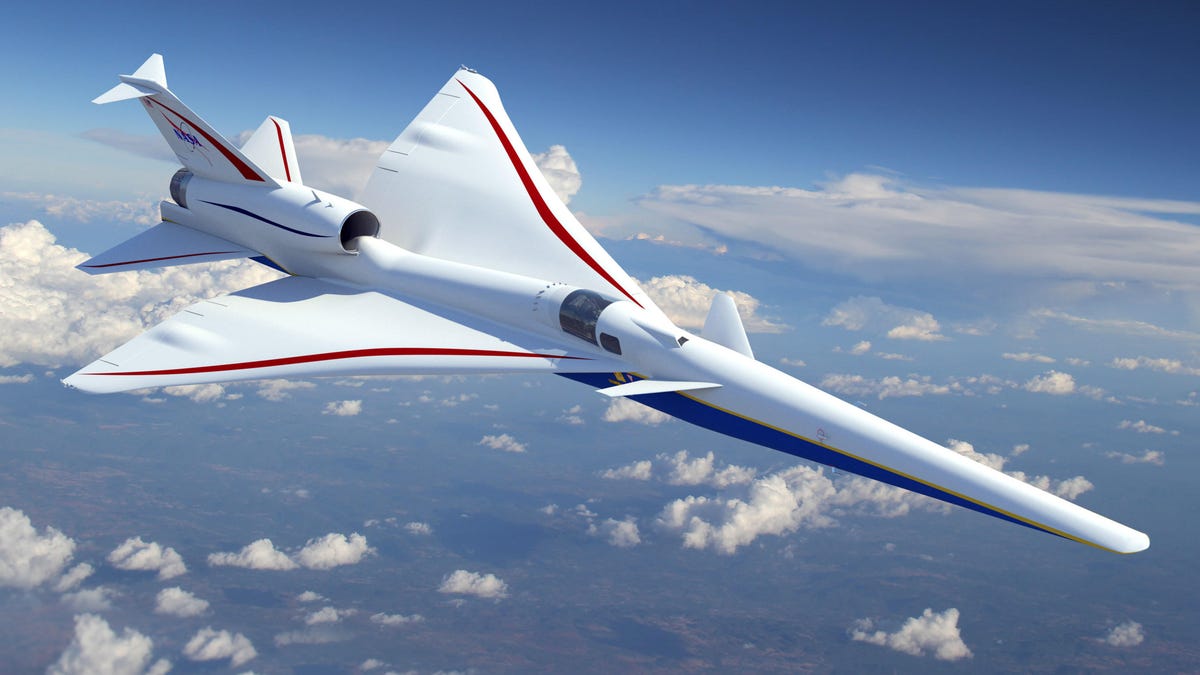NASA orders a supersonic X-Plane, easy on the boom
Lockheed Martin will build the aircraft at its Skunk Works. The goal: the return of passenger travel at supersonic speed.

Lockheed Martin has won a contract from NASA to build an X-Plane that doesn't make a big sonic boom.
NASA wants to bring supersonic speed back to commercial aviation, and it's turning to Lockheed Martin to help us get there.
The space and aeronautics agency on Tuesday awarded Lockheed Martin a $247.5 million contract to build the Low-Boom Flight Demonstrator, a one-off X-Plane with a design intended to eliminate, or at least minimize, the sonic boom characteristic of supersonic aircraft breaking the sound barrier.
The experimental plane is intended to cruise at altitudes around 55,000 feet and to reach speeds around 940 miles per hour. The sound it generates, NASA says, should be at 75 perceived-level decibels, or "about as loud as a car door closing."
Eventually you might have some input into the experiment. After Lockheed Martin finishes its work, including flight tests, NASA expects to begin flying the demonstrator aircraft over unspecified US cities beginning in mid-2022, at which time it will collect data about "community responses" to the X-Plane's flights. It'll pass that information along to regulators in the US and abroad to help shape rules governing supersonic aircraft making flights over land.
Supersonic passenger flights were a thing for several decades. British Airways and Air France made regular flights across the Atlantic to the US until they retired their needle-nosed Concorde aircraft, which flew at about Mach 2 (twice the speed of sound), in 2003. Those transatlantic flights took just three and a half hours.
"It is super exciting to be back designing and flying X-planes at this scale," said Jaiwon Shin, NASA's associate administrator for aeronautics, in a statement.
Some private enterprises are also talking up a return of passenger aircraft that can hit supersonic speed. A company called Boom Supersonic has a target date of 2023 for when it hopes commercial service can begin again, and at last year's Paris Air Show said it has orders for 76 aircraft from five airlines.
Construction of NASA's latest X-Plane -- the agency has a long history with those superfast, high-performance aircraft -- will take place at the fabled Lockheed Martin Skunk Works in Palmdale, California. That's the hush-hush engineering facility that gave us high-wow-value aircraft including the U-2 and SR-71 spy planes.
If it all works out, NASA says, we could be looking ahead to new era of supersonic aircraft carrying passengers and cargo.
Batteries Not Included: The CNET team reminds us why tech is cool.
Tech Culture: From film and television to social media and games, here's your place for the lighter side of tech.

